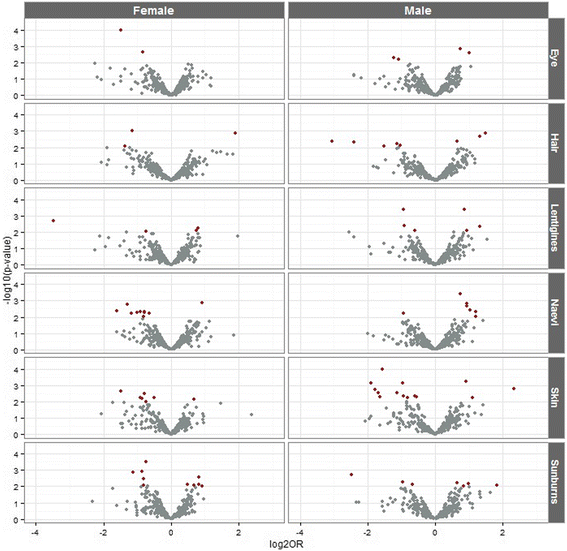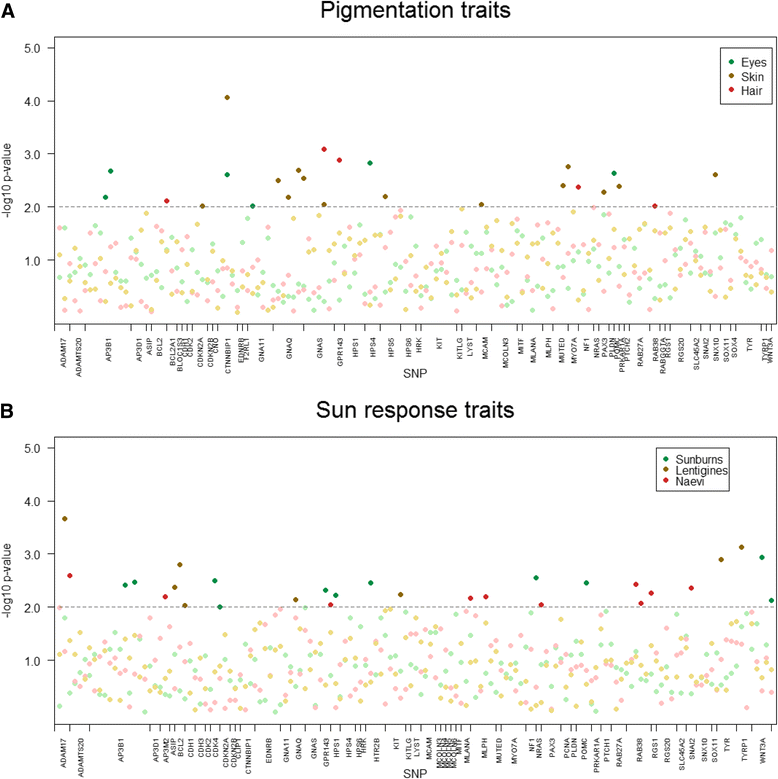Sex-specific genetic effects associated with pigmentation, sensitivity to sunlight, and melanoma in a population of Spanish origin
- PMID: 26998216
- PMCID: PMC4797181
- DOI: 10.1186/s13293-016-0070-1
Sex-specific genetic effects associated with pigmentation, sensitivity to sunlight, and melanoma in a population of Spanish origin
Abstract
Background: Human pigmentation is a polygenic quantitative trait with high heritability. In addition to genetic factors, it has been shown that pigmentation can be modulated by oestrogens and androgens via up- or down-regulation of melanin synthesis. Our aim was to identify possible sex differences in pigmentation phenotype as well as in melanoma association in a melanoma case-control population of Spanish origin.
Methods: Five hundred and ninety-nine females (316 melanoma cases and 283 controls) and 458 males (234 melanoma cases and 224 controls) were analysed. We genotyped 363 polymorphisms (single nucleotide polymorphisms (SNPs)) from 65 pigmentation gene regions.
Results: When samples were stratified by sex, we observed more SNPs associated with dark pigmentation and good sun tolerance in females than in males (107 versus 75; P = 2.32 × 10(-6)), who were instead associated with light pigmentation and poor sun tolerance. Furthermore, six SNPs in TYR, SILV/CDK2, GPR143, and F2RL1 showed strong differences in melanoma risk by sex (P < 0.01).
Conclusions: We demonstrate that these genetic variants are important for pigmentation as well as for melanoma risk, and also provide suggestive evidence for potential differences in genetic effects by sex.
Keywords: Pigmentation; Polymorphisms; Sex; Skin cancer; UV sensitivity.
Figures



References
-
- Rijken F, Bruijnzeel PLB, van Weelden H, Kiekens RCM. Responses of black and white skin to solar-simulating radiation: differences in DNA photodamage, infiltrating neutrophils, proteolytic enzymes induced, keratinocyte activation, and IL-10 expression. J Invest Dermatol. 2004;122:1448–55. doi: 10.1111/j.0022-202X.2004.22609.x. - DOI - PubMed
LinkOut - more resources
Full Text Sources
Other Literature Sources

